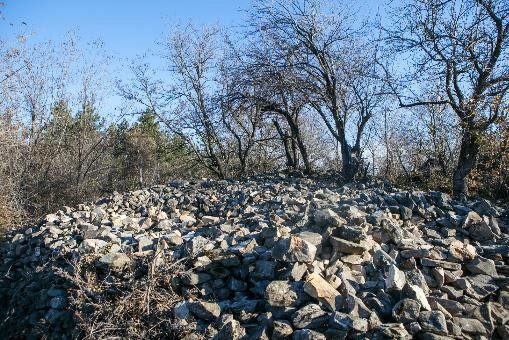

The Fortress “Castra Ad Montanezium” / “Kutlovitsa” It is built on the hill of the fortress or “Gradishteto” at 0.96 km south-west in straight line from the center of Montana. The fortress was built on a hill that rises up to 50 m above the surrounding surface. The first settlement of this strategic height, easily defensible is made of stone, and is from the fourth millennium BC and the Thracian settlement was fortified with a powerful fortress wall (with a preserved thickness of more than 1 m), and there are, also data from the late iron age.
The most important part of the fortress is the system of towers. On the north wall there is a narrow outlet of 0.8 m which is the secret path to the fountain where the water sourced the defenders. The southern side of the fortress wall was double from that of the west, and finished with the tower of battle that has visible layers of bricks. The castle had a main door, with a tower that was built in the year 258, and the inside of the castle was divided into two parts, inside, with a fortified wall. The old walls of the fort were demolished to use the stones for city pavement. This happened when the name of the city was changed from Kutlovitsa in Ferdinand. The Roman fortress was built with the arrival of Roman troops (I Sugambriyska the participant cohort for the repression of the Thracian uprising since ’26). Around the military camp, as it is mentioned on the epigraphic monument, is developed a village, for the first time, from year 134 AD and an ancient altar, which in 160-161 receives the status of a city along with the surronding areas.
The name of Montana is preserved in an inscription from the second century. The economic and cultural prosperity of Montana appears in the centuries II-IV. It was interrupted in the mid-third century because of the gothic invasions. The risk of new barbarian invasions led to the construction of a fort where these attacks have intensified in the century. IV or V. From south and east around the fortress was built the proteyhizma (a second fortress wall). The castle was destroyed in the VII century due to Slavs attack. Subsequently, on the ruins of the castle was created a Slavic settlement.
